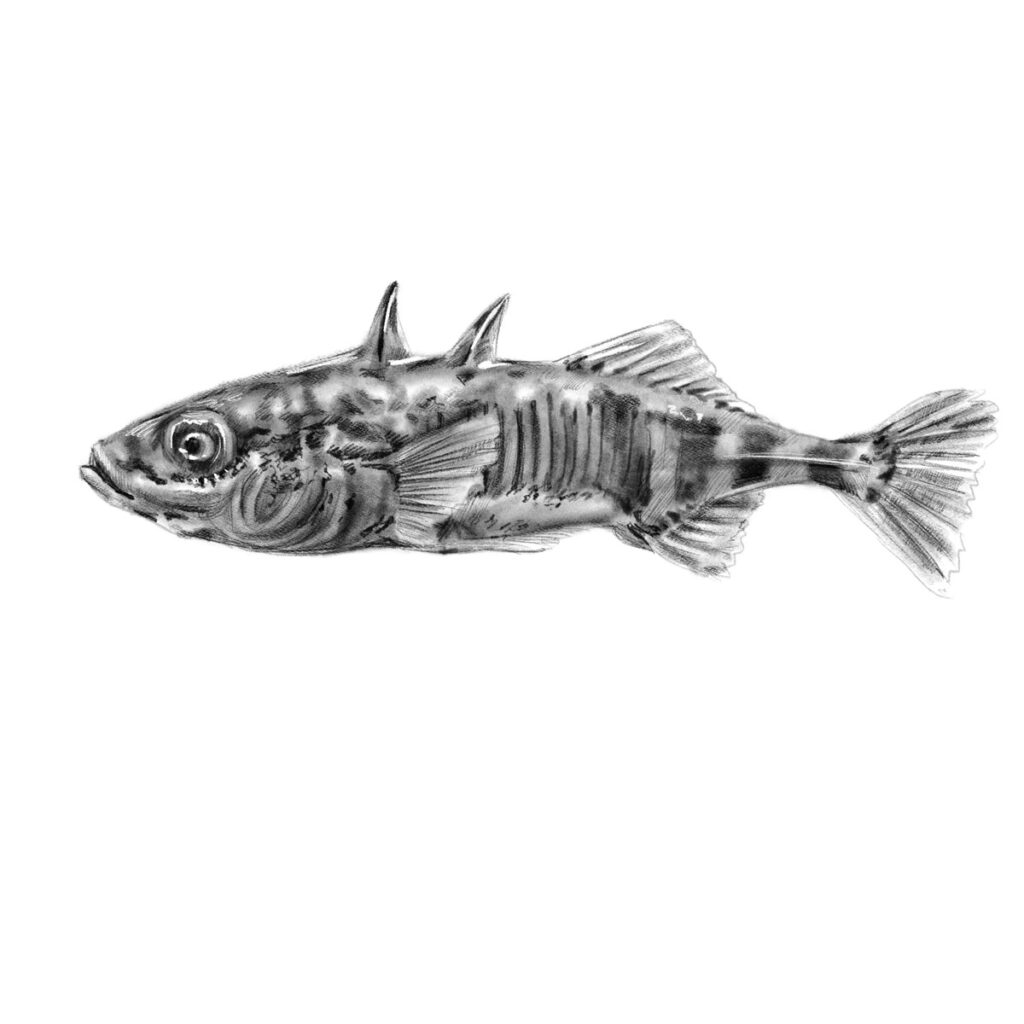Three-spined stickleback
As the name suggests, the three-spined stickleback usually has three (there can also be two to five) single, movable spines on its back; the pelvic fins are also equipped with a strong spine. It favours plant-rich, sunny bays of still waters and slow-flowing meadow streams. At the beginning of the spawning season, the male builds a nest of plant fibres at the bottom of the water, which are solidified by a sticky kidney secretion. It then forces a female into the nest to lay her eggs. The clutch of eggs and the hatching fry are guarded and cared for by the male. Scientists have discovered that males are therefore equipped with a larger brain than females.
- The male fights fiercely with his rivals for the female in order to lure her into his royally prepared burrow - a complicated nest ball covered in sticky kidney secretions - and encourage her to lay her eggs there. Once the work is done, she is immediately fought off, the male wants the female to leave the nest again. Brood care in sticklebacks is purely a man's job!

SCIENTIFIC NAME
Gasterosteus aculeatus
AGE
- up to 3 years
FOOD
- Small invertebrates
- Fish fry
FINE
- Dragonfly larvae
WEIGHT
- up to 28 g
6 - 8 cm
OTHER FISH
We look forward to seeing you
Experience a fascinating world full of adventure and amazing animal encounters. Plan your visit to the zoo now and immerse yourself in the heart of nature!



